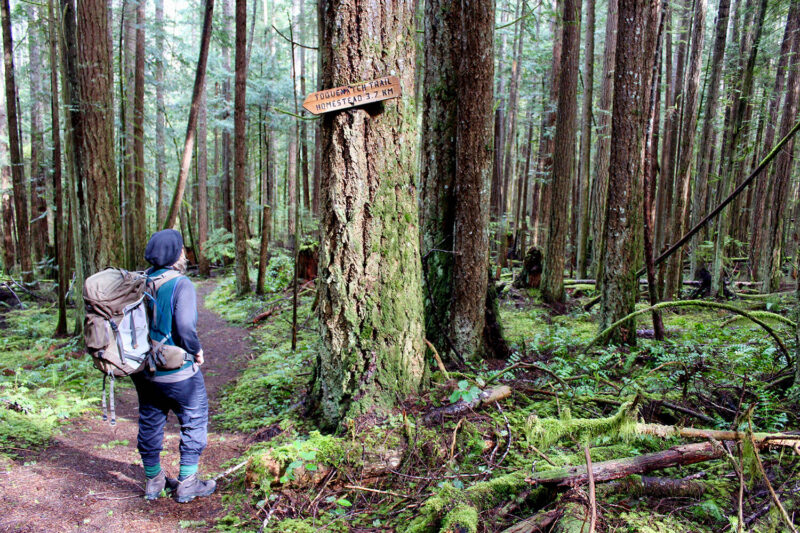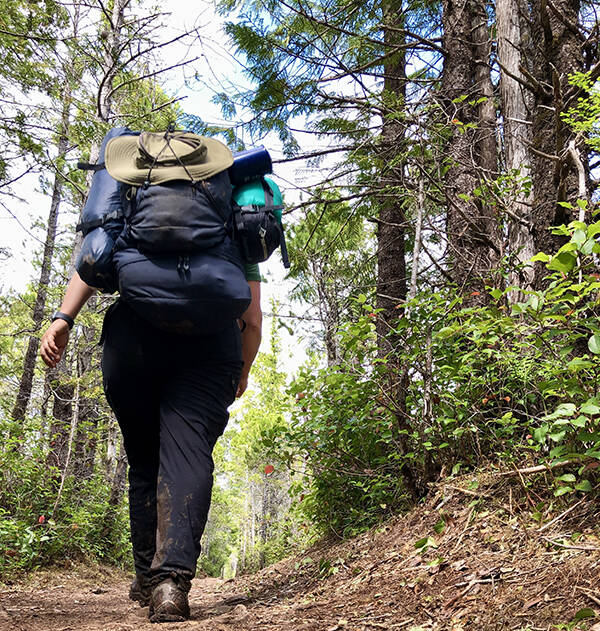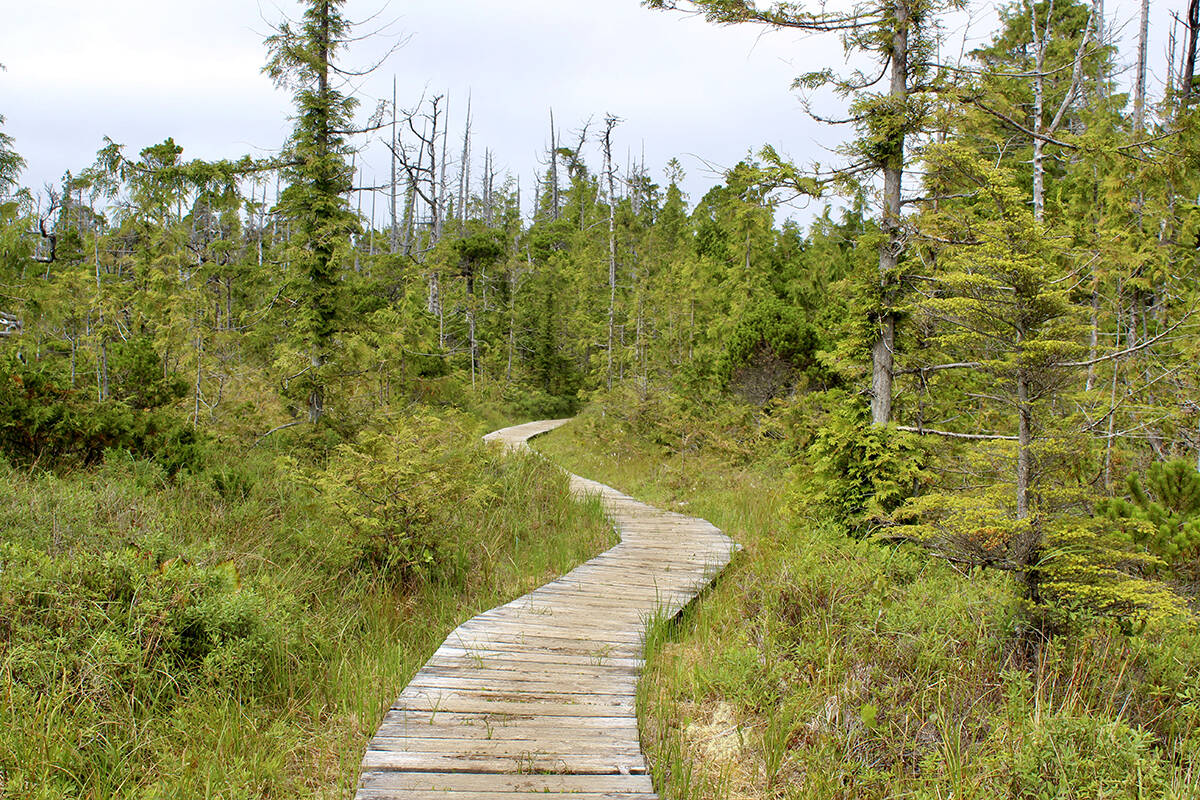Knowing what to bring on a hike can make all the difference between a wonderful day outdoors and a gruelling grind that makes you want to stay indoors for the rest of your life. But if you’re new to hiking, or new to the west coast, how do you know what to take?
If it’s pouring rain, snowing sideways or searing sunshine you may not want to go outside, but remember: there’s no such thing as bad weather, only bad hiking gear. Pack properly and dress for the weather, and you’ll never have another miserable hike — we promise.
Read on for the West Coast Traveller’s six key items for your backpacking checklist.
1. Layers and layers of clothing
You may be chilly at the shady trailhead, hot while you’re hiking and cold at the summit — that’s why comfortable hikers always wear layers. For a base layer, go for clothes that can absorb moisture and are quick-drying, made from moisture-wicking fabrics. Choose a cosy mid-layer made of fleece or down for warmth, and an outer layer that keeps the wind out and shields you from rain or snow.
Hot tip: Thin, silver emergency blankets are surprisingly effective when you need to warm up, and they’re so lightweight that you won’t even notice it at the bottom of your pack. These blankets can be a literal life-saver in unexpected weather changes, so it’s always a good idea to bring one along, just in case. By layering up and being prepared for any type of weather, you’ll stay comfortable and safe throughout your hiking adventure.
2. Slip, slap, slop
Winter or summer, cloudy or sunny, UV rays can damage your skin and sap your energy. For ultimate sun protection, pack a mini bottle of sunscreen to reapply as you sweat, plus a wide-brimmed hat that covers your ears and neck, as well as your face. Insect repellant is key for avoiding frustration and disease-carrying ticks — sprays, lotions and long sleeves will all help you stay protected.
3. For the sole, and the soul
The best hiking shoes are the ones that feel comfortable to you, not the trendy ones some celebrity wore in a movie. Ensure they tie up tight enough to keep your feet in place — movement creates blisters — and make sure there’s enough room for your toes to move freely. For technical mountain hiking, you may want extra ankle support and a stiffer hiking boot.
For forest trails, avoid hiking shoes with mesh so your feet stay dry when splashing through mud puddles. You may only need a lightweight running shoe for many west coast day hikes. It’s important to consider the type of terrain you’ll be hiking on when choosing the right footwear. By selecting the proper boots, you’ll ensure a comfortable and enjoyable hiking experience.
And remember, socks are just as important to happy feet! Layer thin moisture-wicking socks made from synthetic fibres with thick wool socks for cushion. Or invest in a quality pair of hiking socks for all-in-one comfort and zero blisters.
READ MORE: A hiker’s guide to Vancouver Island’s Cape Scott Trail
4. Hydration and nutrition
Always pack a water bottle and snacks, even for short hikes — if you lose the trail or encounter bad weather, you may need to spend extra time outdoors. From purification tablets to UV water straws, there are lots of portable technologies to purify water from streams if you need an emergency refill. Pack high-protein snacks for long-lasting energy, and fruit or chocolate when you need an extra boost. Don’t forget the hand sanitizer, and a few squares of toilet paper!
5. Navigation
Your smartphone is a wonderful tool, but it shouldn’t be the only thing you rely on for navigation in the backcountry. Research your route before you go, and load up maps for offline route-finding. Geolocation and even satellite communication can work on some cell phones, even outside cell service, but check with your provider before you go.
If you’re heading into the backcountry, it might be time to invest in a GPS tracking device or beacon like SPOT. For finding the trailhead, written instructions from other users are often your best bet, and paper maps (tucked into a clear Ziplock bag) are perfect for many excursions.
READ MORE: Knowledge is power: New guidebooks map accessible PNW trails
6. Emergency supplies
Before hiking, always tell someone where you plan to go and when you expect to be back. If you don’t have a local emergency contact, use a pen and paper to leave a note on your car’s dashboard at the trailhead for search and rescue teams. Other small items for your emergency kit? A knife or multi-purpose tool, a first-aid kit with Band-Aids and medical tape, matches or a lighter, a headlamp or flashlight, plus a little cash and ID.
With these hiking essentials, you’ll be ready for any mountain pass or seaside trail. Now get packing so you can get outside and explore!
READ MORE: Unique Tofino hike offers crash course in Second World War history













 You could spend a lifetime paddling here! Endless kayaking adventures await on southern Vancouver Island
You could spend a lifetime paddling here! Endless kayaking adventures await on southern Vancouver Island